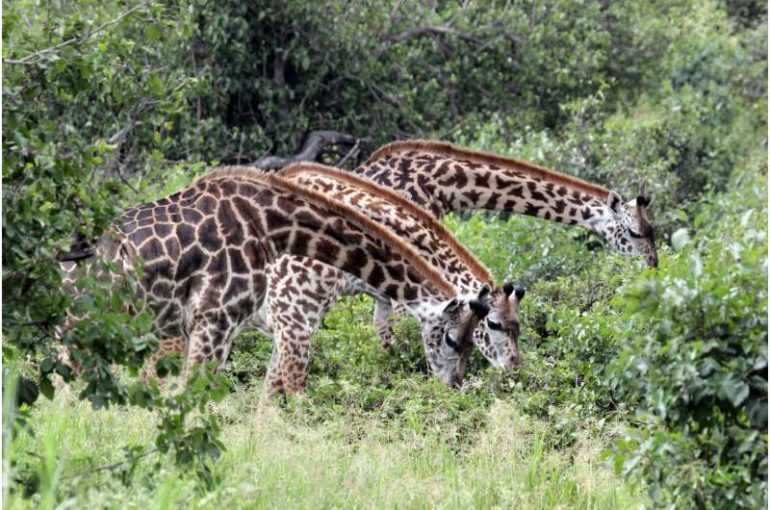A research team led by Monica Bond, research associate at the Department of Evolutionary Biology and Environmental Studies of the University of Zurich (UZH), studied giraffes in Tanzania for five years. The biologists examined the relative effects of sociability, the natural environment, and human factors on survival of the mega-herbivore. They have now shown that adult female giraffes living in larger groups have higher survival chances than more socially isolated individuals.
Gregariousness leads to better survival
Giraffe group formations are dynamic and change throughout the day, but adult females maintain many specific friendships over the long term. “Grouping with more females, called gregariousness, is correlated with better survival of female giraffes, even as group membership is frequently changing,” says Bond. “This aspect of giraffe sociability is even more important than attributes of their non-social environment such as vegetation and nearness to human settlements.”
The benefits of many friends
Aside from poaching, the main causes of adult female giraffe mortality are likely to be disease, stress or malnutrition, all of which are interconnected stressors. “Social relationships can improve foraging efficiency, and help manage intraspecific competition, predation, disease risk and psychosocial stress,” says UZH professor Barbara König, senior author of the study. Female giraffes may seek out and join together with an optimal number of other females in order to share and obtain information about the highest-quality food sources. Other benefits to living in larger groups might be lowering stress levels by reducing harassment from males, cooperating in caring for young, or simply experiencing physiological benefits by being around familiar females. The study also finds that females living closer to towns had lower survival rates, possibly due to poaching.
Social habits similar to humans and primates
The team documented the social behaviors of the wild free-ranging giraffes using network analysis algorithms similar to those used by big-data social media platforms. According to the results, the giraffes are surprisingly similar in their social habits to humans and other primates, for whom greater social connectedness offers more opportunities. Chimpanzees and gorillas, for example, live in communities where ties between many individuals facilitate the flexibility of feeding strategies. “It seems to be beneficial for female giraffes to connect with a greater number of others and develop a sense of larger community, but without a strong sense of exclusive subgroup affiliation,” adds Monica Bond.
Study of a giraffe population in Tanzania
For the past decade the research team has been conducting the largest study to date of a giraffe population. The vast scale of their study area in the Tarangire region of Tanzania spans more than a thousand square kilometers and includes multiple social communities, each with about 60 to 90 adult female members. Thus, the study was able to disentangle individual from community-level influences on survival. The study is also unique in combining social network analysis and modeling of vital rates such as survival in a sample of hundreds of individuals.
Human presence weakens social relationships of giraffes
More information:
Sociability increases survival of adult female giraffes, Proceedings of the Royal Society B, rspb.royalsocietypublishing.or … .1098/rspb.2020.2770
Provided by
University of Zurich
Citation:
Friends matter: Giraffes that group with others live longer (2021, February 9)
retrieved 9 February 2021
from https://phys.org/news/2021-02-friends-giraffes-group-longer.html
This document is subject to copyright. Apart from any fair dealing for the purpose of private study or research, no
part may be reproduced without the written permission. The content is provided for information purposes only.



